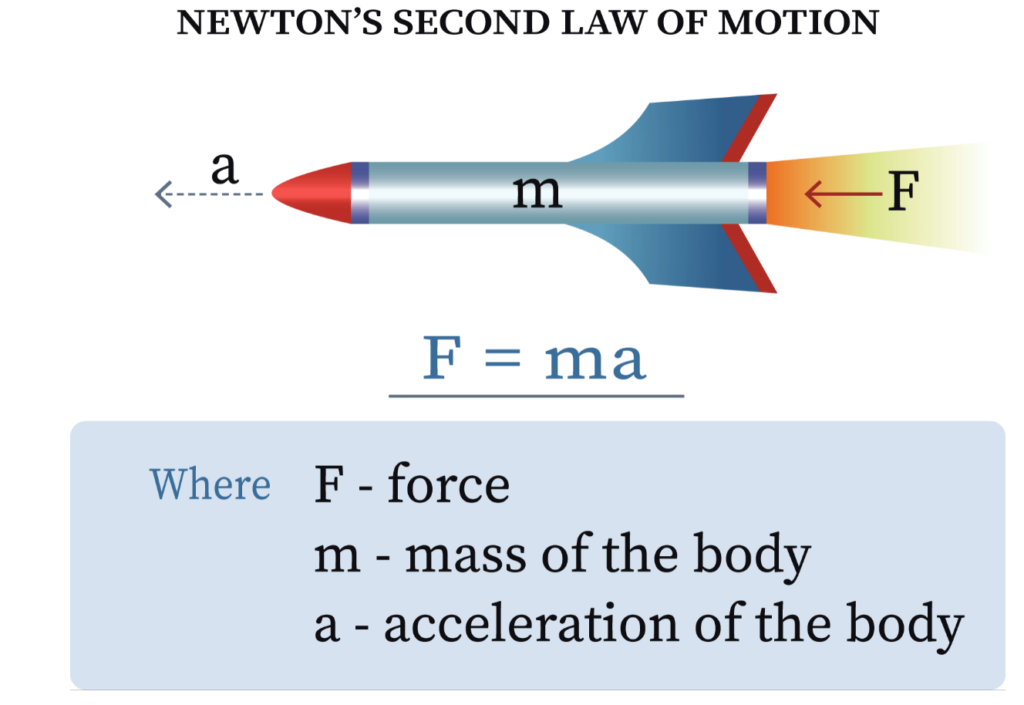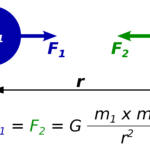Issac Newton’s second law of motion states that the acceleration of an object is directly proportional to the force applied to it, and inversely proportional to its mass. In other words, the heavier an object is, the more force is required to accelerate it. The formula for this law is:
F = ma
Where F is the force (in Newtons), m is the mass (in kg), and a is the acceleration (in m/s2).
If you have ever pushed a heavy object, like a car, you know that it takes more force to get it moving than it does to keep it moving. This is because of Newton’s second law of motion. Once the car is moving, the force required to keep it moving is less than the force required to get it moving.
This law also explains why it is easier to stop a light object than a heavy object. The heavier the object, the more force is required to stop it.
While we commonly write the formula as F = ma it can also be rewritten as a = F/m. This form of the equation is useful when solving for acceleration. For example, if we know that a car has a mass of 1000 kg and we want to know what acceleration it would need to achieve a force of 5000 N, we can rearrange the equation to solve for a:
a = F/m
a = 5000 N/1000 kg
a = 5 m/s2
This means that the car would need to accelerate at 5 m/s2 in order to achieve a force of 5000 N.
Newton’s second law of motion is a very powerful tool that allows us to predict the behavior of objects under different circumstances. It is one of the most important laws in physics and has many applications in the real world.
What is amazing is that Issac Newton discovered this Law centuries before modern technology.






